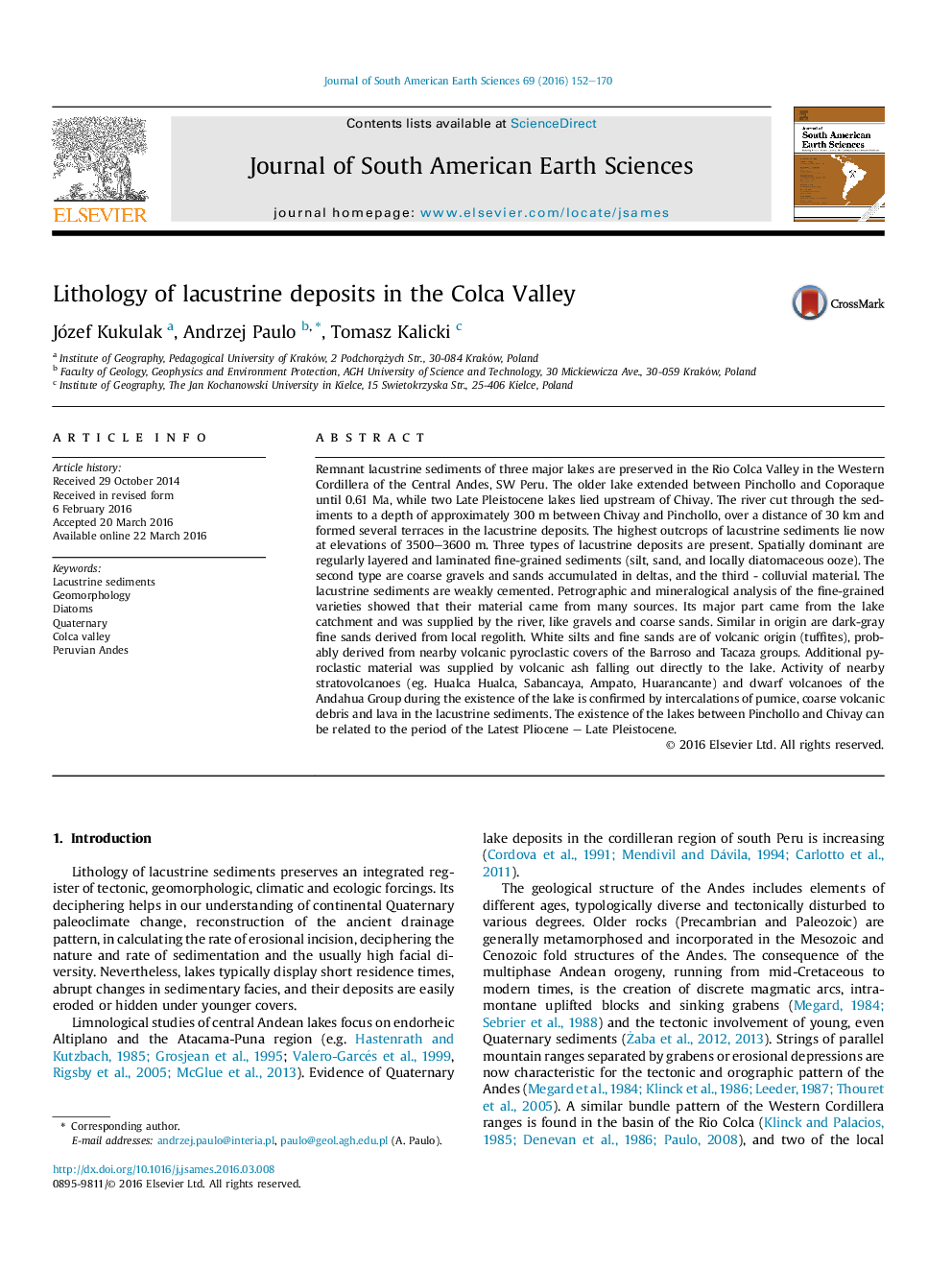| کد مقاله | کد نشریه | سال انتشار | مقاله انگلیسی | نسخه تمام متن |
|---|---|---|---|---|
| 4682075 | 1635141 | 2016 | 19 صفحه PDF | دانلود رایگان |
• Widespread lacustrine sediments are preserved in the Colca Valley, south Peru.
• Fluvial, colluvial and fine air-fall pyroclastic material characterize main facies.
• Their stratigraphical profile preserves record of climatic and geological events.
• Intercalations of isotope dated lavas suggest Late Pliocene - Early Pleistocene age.
• Discovery of lake system bears on idea of river network in the Early Quaternary.
Remnant lacustrine sediments of three major lakes are preserved in the Rio Colca Valley in the Western Cordillera of the Central Andes, SW Peru. The older lake extended between Pinchollo and Coporaque until 0.61 Ma, while two Late Pleistocene lakes lied upstream of Chivay. The river cut through the sediments to a depth of approximately 300 m between Chivay and Pinchollo, over a distance of 30 km and formed several terraces in the lacustrine deposits. The highest outcrops of lacustrine sediments lie now at elevations of 3500–3600 m. Three types of lacustrine deposits are present. Spatially dominant are regularly layered and laminated fine-grained sediments (silt, sand, and locally diatomaceous ooze). The second type are coarse gravels and sands accumulated in deltas, and the third - colluvial material. The lacustrine sediments are weakly cemented. Petrographic and mineralogical analysis of the fine-grained varieties showed that their material came from many sources. Its major part came from the lake catchment and was supplied by the river, like gravels and coarse sands. Similar in origin are dark-gray fine sands derived from local regolith. White silts and fine sands are of volcanic origin (tuffites), probably derived from nearby volcanic pyroclastic covers of the Barroso and Tacaza groups. Additional pyroclastic material was supplied by volcanic ash falling out directly to the lake. Activity of nearby stratovolcanoes (eg. Hualca Hualca, Sabancaya, Ampato, Huarancante) and dwarf volcanoes of the Andahua Group during the existence of the lake is confirmed by intercalations of pumice, coarse volcanic debris and lava in the lacustrine sediments. The existence of the lakes between Pinchollo and Chivay can be related to the period of the Latest Pliocene – Late Pleistocene.
Journal: Journal of South American Earth Sciences - Volume 69, August 2016, Pages 152–170
